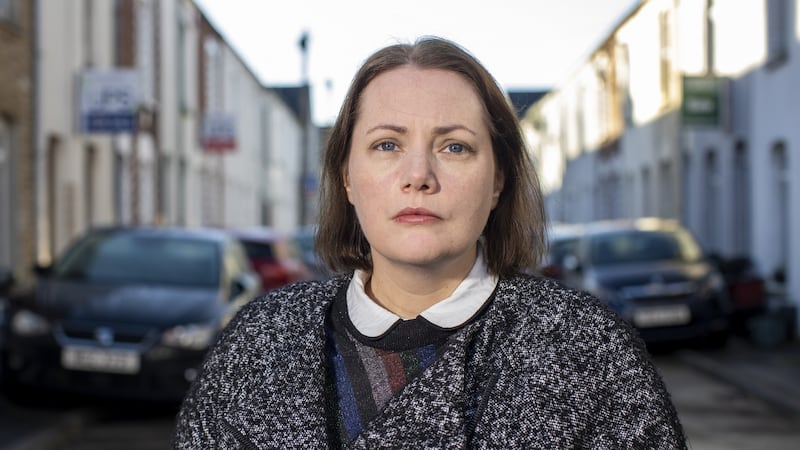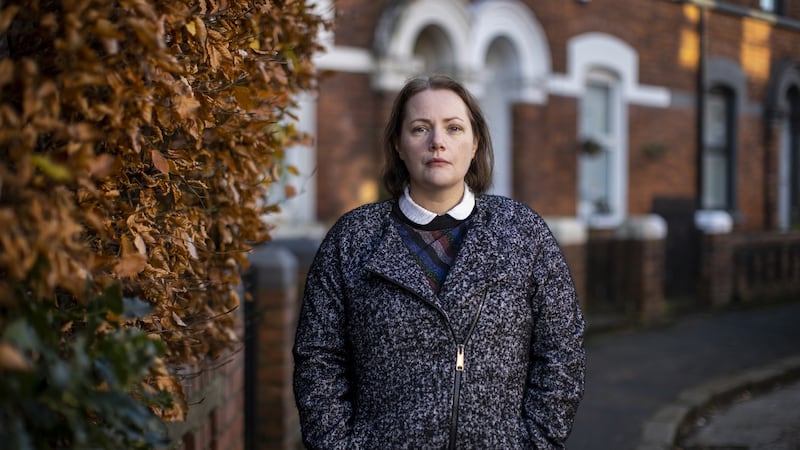Elaine Crory has been renting for more than 20 years, and has lost count of how many houses she has lived in.
"I came to Belfast in 2009 and, counting off the top of my head, I've lived in seven houses. My youngest child is five and she has lived in two houses.
“There are still things in boxes that we haven’t unpacked, because you don’t know if it’s worth your while, and you never feel permanent.
Everybody who is renting is just waiting “for disaster to strike... it’s the vulnerability”, she says. “You’re very much at the mercy of the landlord.”
Crory has no shortage of stories; having to leave because the landlord’s relative needed the house, being asked to move out – with all their furniture and two small children – for two weeks for repairs, and having to find a new home while pregnant. “I had to carry a double bed up a flight of stairs... nobody would choose to move house when they’re pregnant with no help unless they were forced into it.
“This did not happen to me, but I’ve known people who’ve literally walked out of the house in the morning and saw the for sale sign in the front garden and that’s the first they’ve heard that they’re going to have to move.”
Security of tenure – or the lack of it – is the biggest problem facing renters in Northern Ireland, says Paddy Gray, emeritus professor of housing at Ulster University.
“Your landlord could be the best landlord in the world but you don’t know how things might change, so you know you have this Christmas but you can’t look ahead to next Christmas.
“Research would show that landlords don’t want to throw out good tenants but there are many reasons people might genuinely want to sell, or to move back into a property again.
“Before Covid-19 there was only a four-week eviction period. Now that’s being extended, but it’s still unlike in the social housing sector, where you can say you’ve basically got a home for life as long as you follow the rules.”
Everyone, says Gray, wants to be able to live “securely and safely”; in the private rental sector, “it’s the not knowing”.

In the North, about 30 per cent of housing is rental accommodation, according to the Northern Ireland Statistics and Research Agency (Nisra)'s figures for the 2020-21 financial year.
This is split almost equally between those in social housing – rented from the Housing Executive or housing associations – and those in private rented accommodation. In practice, however, lengthy waiting lists for social housing – 43,971 applicants as of March 2021 – mean the private rental market is increasingly a way of housing people on low incomes.
“People just can’t get social housing, and with private rental housing you’re more likely to get somewhere they want to live rather than being offered an area they possibly don’t want to live in,” says Gray. “All the very desirable properties in a social sector are difficult to get; you would be on a waiting list for years.”

There does not seem to be a way to win. It's like the entire game is rigged against us
Rents are increasing. According to the most recent report into the performance of the private rental market in the North by Ulster University, the Housing Executive and propertynews.com – which covers the first half of 2021 – the average rent in Northern Ireland is now £703 per month, an increase of 4.8 per cent compared with the second half of last year and 9.2 per cent compared with a year ago.
Rents are highest in Belfast; the average monthly rent in the Belfast City Council area is £782, up 3.2 per cent in six months and 7.2 per cent in a year, whereas outside Belfast the average rent increased by 2.5 per cent in six months and 6 per cent in a year, to £613 per month.
For context, the median annual earnings of a full-time employee in Northern Ireland – again according to Nisra – is £29,000.
Belfast estate agent Samuel Dickey, a partner with Simon Brien Residential, has witnessed a “significant” increase in rental values driven by “supply and demand”. He says the number of available rental properties in Northern Ireland has dropped from 140,000 in 2016 to, according to the latest available figures, 114,000 in 2019.
He describes “20 odd viewers, at least, for every property that you put on the market, and city centre ones could be more, you can have 40 or 50 viewing requests, and you get applications in before they even view it”.
This also pushes up prices: “With that type of demand, landlords ask, ‘Is my rent at the right price? Am I asking too little for this?’
“So that’s what’s been happening, rents have been going up £50, £100, £200 a month, and they’re getting it, they’re achieving it.
“Rents have been stagnated in Northern Ireland for quite a long time, rents haven’t really increased much from 2006-7 to maybe a year ago. A two-bed apartment [in the city centre] was always getting £500 a month, now you’re getting about £800 a month, it’s a massive increase.
“Little terrace houses, mid-terraces, which were all getting £500 a month, again, you’re now getting £650-£700 a month, but in comparison with Dublin or London it’s peanuts, nothing, but then we don’t have the salaries of Dublin or London.”
Gray agrees: “Like everything else it’s supply and demand. In very highly sought-after areas you’ll pay a lot more rent to get a good property, but the rental levels per se in Northern Ireland – and I always get castigated every time I say this – but they are not unaffordable.
"When you think in terms of Belfast city centre, you can pick up apartments for £600, £700 a month. In Dublin you wouldn't get a hall for that, you'd be talking €2,000, and the same in the south of England. "
Crory lives in west Belfast; for the past 11 years, all the properties she and her husband have lived in have been within walking distance of each other. “We’ve stayed within this area partially because the children’s school is here but primarily because it’s cheaper to live here.”
Their current house costs £550 a month in rent. Crory explains that other similar houses which are up for sale are selling for about £100,000-£110,000. “So assuming you had a deposit of a certain size and a number of years to pay, it would be £350-£375 a month [with a mortgage] and we’re paying £550 in rent.”
They are saving to buy their own home. “We’re looking at houses within a specific price range, and they’re coming in at just over half the cost in terms of the mortgage repayment to what we’re paying in rent.”
Yet, just as rents have increased, so too have property prices, and so have the requirements asked for by banks due to the pandemic. “Last year houses that they were looking for a 10 per cent deposit on, they’re now looking for 15 per cent as standard, and it just makes it so hard for people like us who are just inching their way; maybe £100 this month, £120 next month, £80 the following month goes into our savings.
“And when you’re getting there over a period of years, every time that moves up by a few thousand, that moves you on by several years before we’ll have a deposit. Of course, the longer we’re saving for a deposit, the shorter time we have to complete the mortgage which means our monthly payments will go up.
“There does not seem to be a way to win. It’s like the entire game is rigged against us.”
It's a small proportion that are actually the bad landlords who need to be regulated
The Private Tenancies Bill, which is making its way through Stormont, is designed to improve the protection for tenants in the private rented sector. Its provisions include extending the notice-to-quit period a landlord must give a tenant and restricting rent increases to once in a 12-month period.
On regulation, Gray says, there is much more to be done. He describes the new legislation as “pretty light touch compared to the regulation in the south of Ireland” but notes that in the North there is an independent tenancy deposit scheme to protect people’s deposits “so the landlord can’t just run off with them”, which does not exist south of the Border.
However, he emphasises “the surveys that have been carried out show 70-80 per cent, sometimes more, are satisfied in the private rental sector. It’s a small proportion that are actually the bad landlords who need to be regulated, yet they’re always the ones who get the headlines.”
For the meantime, Crory and her husband are still renting; she sees “very little” protection for renters and says the system is “not structured around renters, it’s structured around property owners”.
A rent cap, she says, would make an “immediate difference”, because the “rents are spiralling constantly, and that’s another reason you want to hold onto the place you’re in, because every time you have to move, the rent goes up”.
In the longer term, “there needs to be more public housing built which would reduce the pressure on private rentals, because landlords know they can charge whatever they want, and they do”.








